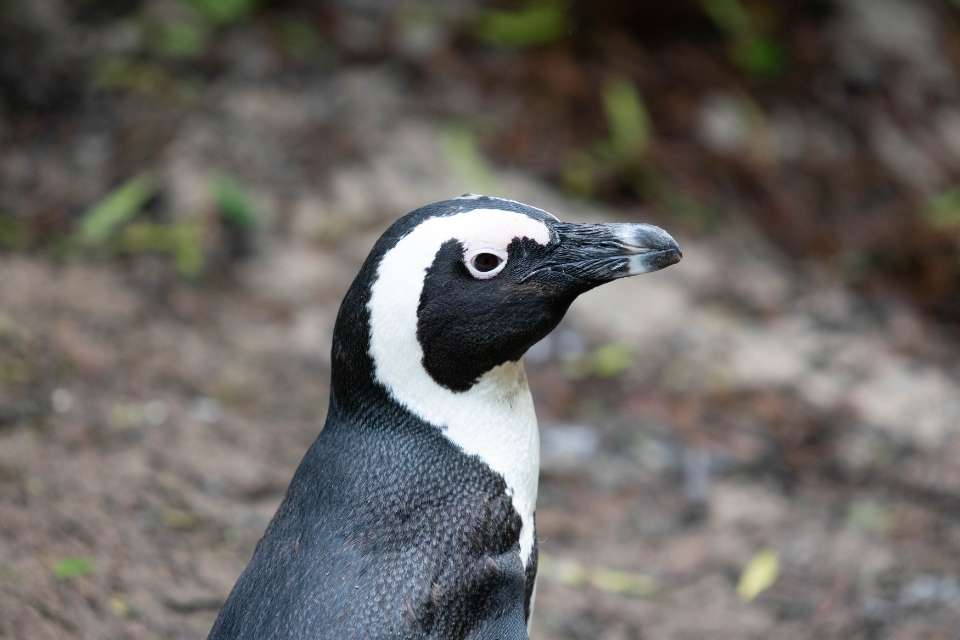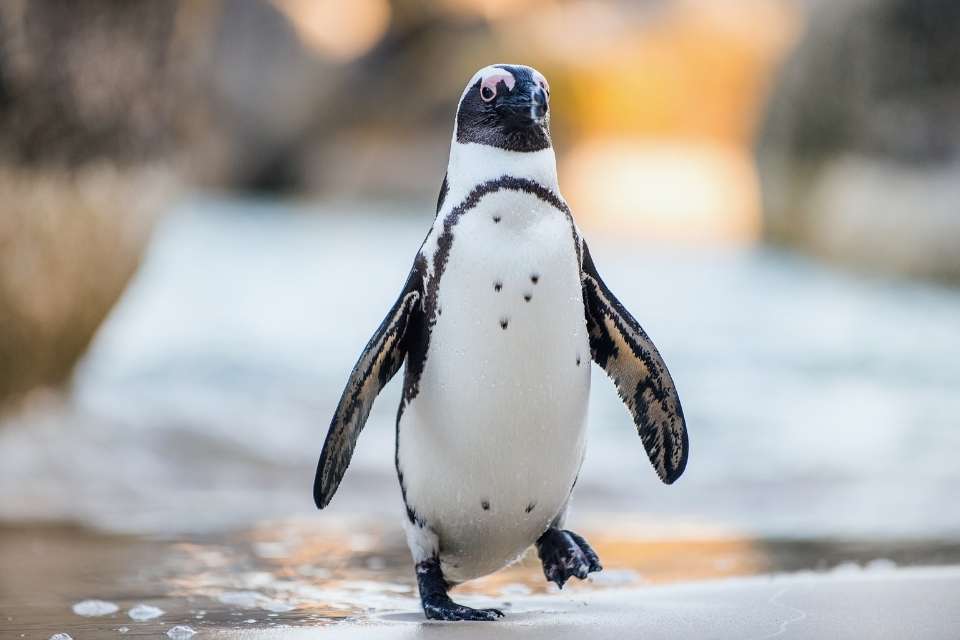Have you ever wondered if penguins have a nose? Well, the answer might surprise you. Penguins do indeed have a nose, but it’s not what you might expect.
Unlike other animals, their noses are not visible externally. Penguins have a specialized organ called the nares, which is located inside their beaks. These internal nostrils serve as the entrance to their respiratory tract and also contain their olfactory organ, giving them a sense of smell.
But why can’t we see their noses? Penguins’ nares are positioned inside their beaks to prevent water from entering their nasal passages while swimming. This unique adaptation helps them navigate their marine environment without hindrance.
Key Takeaways:
- Penguins do have a nose, called nares, but it is not externally visible.
- Their nares are located inside their beaks and serve as the entrance to the respiratory system.
- Penguins use their sense of smell primarily for locating breeding colonies and recognizing colony members.
- The positioning of the nares inside the beak helps prevent water from entering the nasal passages while swimming.
- Penguins are fascinating creatures with unique anatomical adaptations.
The Anatomy of Penguins: Bills, Beaks, and Noses
Penguins have bills, which are actually their beaks. The beak is a hard, pointed structure made of keratin. Penguins have internal nostrils called nares, which are small openings located inside their bills.
These nares serve as the entrance to the nasal cavity and allow penguins to breathe and smell. The positioning of the nares inside the beak helps prevent water from entering the nasal passages while swimming.
The Sensory World of Penguins: The Role of Smell
Penguins possess a remarkable sense of smell, although it may not be as highly developed as in some other animals. They utilize this sense primarily to locate their breeding colonies and to recognize individual members within their colony.
While penguins heavily rely on their keen vision for underwater activities, their sense of smell plays a crucial role in various aspects of their lives.
Being able to detect odors to some extent aids penguins in finding food and identifying their own chicks in crowded colonies.
This not only helps them navigate the vast and often challenging environments they inhabit but also contributes to the social dynamics within their groups.
Although penguins primarily rely on their vision to maneuver through the depths of the ocean in search of prey, their functional sense of smell adds an extra layer of sensory perception that enhances their abilities as proficient hunters and caretakers.
Penguins and Their Love for Cold: A Survival Guide
Penguins are truly remarkable creatures that have evolved fascinating adaptations to thrive in cold environments. Their ability to survive in extreme temperatures is a testament to their resilience and resourcefulness.
One of the key strategies penguins employ to keep warm is huddling. By gathering in large groups, penguins conserve body heat and create a shield against the chilling winds of their icy habitats. This collective huddling behavior helps them maintain their body temperature and survive in the harshest conditions.
In addition to huddling, penguins possess a dense layer of insulating feathers that provide excellent insulation against the cold. These feathers trap air close to the penguin’s body, creating a layer of warmth. This adaptation helps them retain body heat and stay cozy in frigid temperatures.
Another crucial adaptation of penguins is the presence of a layer of blubber beneath their skin. This layer of fat acts as an excellent insulator, providing additional warmth and protection from the cold.
The blubber serves as a valuable energy reserve, enabling penguins to withstand long periods without food during their breeding season.
Penguins also exhibit smart behaviors to regulate their body temperature. They tuck their flippers close to their bodies, reducing heat loss from their extremities.
Additionally, when caring for their eggs or chicks, penguins carefully rotate them, ensuring they are evenly warmed and protected from the cold ground.
While penguins can tolerate a range of temperatures, they have a natural affinity for cold environments. These icy habitats offer a plentiful supply of food, including fish, squid, and krill.
Moreover, the frigid waters protect penguins from many predators, providing them with safety and security.
In conclusion, penguins are well-equipped to survive and thrive in cold environments. Their adaptations, such as huddling, insulating feathers, blubber, and temperature-regulating behaviors, enable them to conquer the challenges posed by extreme temperatures.
The penguins’ love for cold environments is not only a matter of survival but also a testament to their incredible adaptability and unique place in the natural world.
What Do Penguins Do When They Are Cold?
When penguins are exposed to cold temperatures, they possess remarkable thermoregulation abilities and engage in specific behaviors to keep warm and ensure their survival. These adaptations are essential for their survival in the harsh Antarctic climate.
One behavior that penguins exhibit when they are cold is huddling together in large groups.
By huddling, they create a dense mass of bodies that conserves body heat. The penguins on the outer edge of the huddle rotate periodically to share the warmth with those in the center. This collective heating strategy is vital for their survival in extremely low temperatures.
Penguins also have adaptations to help them retain heat. They have a layer of blubber beneath their skin, which acts as insulation and helps to keep them warm. Additionally, their feathers play a crucial role in temperature regulation.
Penguins have a dense layer of insulating feathers that provide excellent insulation, reducing heat loss to the surrounding environment.
Another tactic penguins employ to regulate their body temperature is tucking their flippers close to their bodies. By keeping their flippers close, they minimize heat loss from their extremities, further conserving heat.
Furthermore, penguins rotate their eggs or chicks to regulate their temperature. Penguins lay their eggs on their feet and cover them with a warm layer of feathers. By rotating their eggs, they ensure that each side of the egg receives an equal amount of heat, optimizing the incubation process.
Similarly, when caring for their chicks, penguins rotate them to ensure that they receive sufficient warmth and protection from the cold.
In conclusion, penguins employ various strategies and behaviors when they are cold to maintain their body temperature and survive in freezing environments. Huddling, having a layer of blubber and insulating feathers, tucking their flippers, and rotating their eggs or chicks are just a few examples of the incredible adaptations that penguins possess. These unique behaviors make them highly resilient and capable of thriving in extreme cold conditions.
Do Penguins Need to Be Cold?
While penguins are well-adapted to cold environments, they possess remarkable adaptability to different temperature ranges. Penguins have the ability to regulate their body temperature through a process called thermoregulation.
This allows them to conserve heat in cold climates and cool down in warmer temperatures.
Penguins exhibit various behaviors to cope with temperature fluctuations. In colder environments, they gather together in large groups called huddles to conserve body heat.
Penguins also have a layer of blubber beneath their skin and a dense layer of insulating feathers, which provides additional protection against the cold.
Interestingly, penguins can also tolerate warmer temperatures. Some penguin species undertake long migrations to find suitable breeding grounds and feeding areas in different climates. This ability to adapt to changing environments demonstrates their remarkable flexibility and resilience.
Overall, while penguins are commonly associated with cold climates, they have proven to be highly adaptable to a range of temperatures.
Their unique anatomical features and behavioral strategies enable them to thrive in various climate conditions, making them fascinating creatures of the animal kingdom.
Conclusion
In conclusion, penguins do have a nose, although it is not visible externally. Their noses, called nares, are located inside their beaks and serve as the entrance to their respiratory system.
While penguins rely more on their vision than their sense of smell for underwater activities, they do have a functional sense of smell that helps them locate breeding colonies and recognize colony members.
Penguins are also well-adapted to survive in cold environments. They have unique anatomical features such as a dense layer of insulating feathers, a layer of blubber for additional insulation, and the ability to regulate their body temperature through thermoregulation.
These adaptations allow them to thrive in cold climates and endure the extreme temperatures of their natural habitats.
However, penguins are not limited to cold environments alone. They can tolerate a range of temperatures and have shown adaptability to changing environments. Some penguin species undertake long migrations in search of suitable breeding grounds and feeding areas, demonstrating their ability to thrive in different climates.
Penguins truly are fascinating creatures of the animal kingdom, with their intriguing nose anatomy, sensory capabilities, and adaptability to various temperature conditions.
FAQ
Do penguins have a nose?
Yes, penguins do have a nose, although it is not visible externally. Their noses, called nares, are located inside their beaks and serve as the entrance to the respiratory system.
What is a penguin’s beak made of?
A penguin’s beak, also known as their bill, is a hard, pointed structure made of keratin.
Where are penguin nostrils located?
Penguin nostrils, called nares, are located inside their bills. These nares serve as the entrance to the nasal cavity and allow penguins to breathe and smell.
Do penguins have a sense of smell?
Yes, penguins have a sense of smell, although it is not as highly developed as in some other animals. They use their sense of smell primarily to locate their breeding colonies and to recognize individual members of their colony.
How do penguins survive in cold environments?
Penguins have multiple adaptations to survive in cold environments. They huddle in large groups to conserve body heat, possess a layer of blubber and dense insulating feathers, and exhibit behaviors such as tucking their flippers close to their bodies and rotating their eggs or chicks to regulate temperature.
What do penguins do to keep warm when they are cold?
When penguins are cold, they engage in behaviors to keep warm, such as huddling together in large groups, tucking their flippers close to their bodies, and rotating their eggs or chicks to regulate temperature. They also have a dense layer of insulating feathers and a layer of blubber for added insulation.
Can penguins survive in climates other than cold?
Yes, penguins can tolerate a range of temperatures and have the ability to regulate their body temperature through thermoregulation. Some penguin species undertake long migrations to find suitable breeding grounds and feeding areas, demonstrating their adaptability to changing environments.


